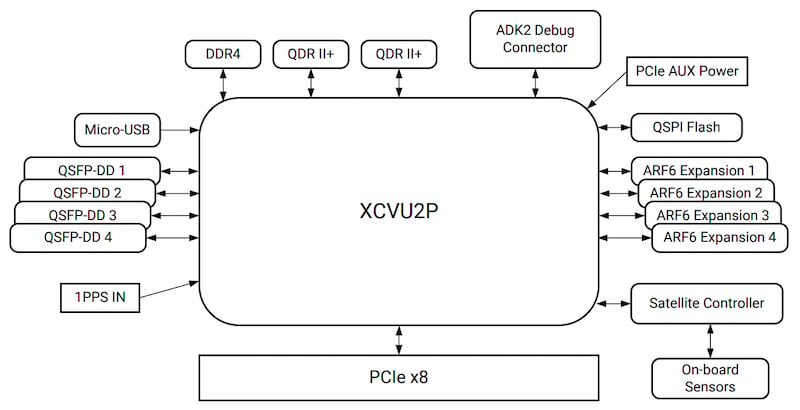FPGA Advances Tackle Mounting Data Demands From E-Trading to AI Processing
In this roundup, we discuss how AMD, Intel, and Lattice Semiconductor are pushing the boundaries of FPGAs with new offerings.
As the world becomes more reliant on data-intensive workloads, the need for low-latency computing has never been greater. Field programmable gate arrays (FPGAs) have emerged as a powerful platform for real-time computation.

AMD's UL3524 accelerator card. Image used courtesy of AMD
This eary Fall the computing industry saw a slew of advances coming from some of the top players, including AMD, Intel, and Lattice Semiconductor.
AMD Unveils FPGA-Based Accelerator
The first product highlight of our roundup comes from AMD with its new AMD Alveo UL5324 accelerator card.
AMD designed the Alveo UL5324 accelerator specifically for the needs of fintech applications such as ultra-low latency electronic trading. Notably, the backbone of the device is the AMD Virtex UltraScale+ VU2P FPGA, offering 1,722 K logic cells, 787 K LUTs, 1,680 DSP slices, and 125 W TDP. According to AMD, the custom-designed FPGA features novel architectural upgrades that enable a 7x latency improvement over previous FPGAs, equating to less than 3 ns of FPGA transceiver latency.

High-level block diagram of the UL3524. Image used courtesy of AMD
Coming in a single-slot, PCIe CEM4.0-compliant card, the UL3524 is said to unlock faster trading times and greater productivity for companies.
Intel Expands FPGA Portfolio
Intel also made waves in the FPGA market with its expansion of its Agilex FPGA portfolio. The expansion is so substantial that Intel has already released 11 of an expected 15 new products in 2023, contributing to a 35% year-over-year revenue growth for its Programmable Solutions Group business unit.

Features of Intel's Agilex FPGA portfolio. Image used courtesy of Intel
The Agilex series is segmented into various categories, each targeting specific applications. The B-series FPGAs focus on board and system management, offering higher I/O density in smaller form factors at lower power compared to Intel MAX 10 FPGAs. Meanwhile, the C-series FPGAs extend capabilities across a range of complex programmable logic devices (CPLD) and FPGA applications.
One of the most compelling aspects of the Agilex portfolio is its performance metrics. The Agilex 5 FPGAs, part of the E-series, are said to deliver up to 1.6x better performance per watt compared to other 16 nm node competitors. Intel claims it achieves this performance through the second-generation Intel Hyperflex FPGA architecture combined with Intel 7 process technology. Moreover, these FPGAs incorporate the industry's first AI tensor block, making them a candidate for edge AI applications.
Lattice Releases FPGA With Embedded Vision
Finally, Lattice Semiconductor had a recent FPGA announcement with its launch of its Lattice CrossLinkU-NX FPGA family.
Lattice claims the new family of FPGAs is the industry’s first-in-class with integrated USB functionality. Specifically, the devices come with hardened USB 2.0 up to 489 Mbps and USB 3.2 that reaches speeds up to 5 Gbps.

The CrossLinkU-NX FPGA. Screenshot used courtesy of Lattice Semiconductor
According to the company, the solution is designed for low-power AI solutions, with an emphasis on vision applications. Lattice has included low-power standby mode and a complete set of reference designs for the CrossLinkU-NX FPGAs to simplify these USB-based designs in fields like computing, industrial, automotive, and consumer.
FPGA Improvements Across the Board
These three announcements illustrate that the use cases for FPGAs are extremely varied. Yet, with each application, device makers seem to maintain a fundamental focus on latency and power efficiency. With major semiconductor companies developing FPGA-based solutions that are faster, more power efficient, and more advanced, the next generation of FPGAs will need to keep pace with an extremely competitive computing marketplace.







